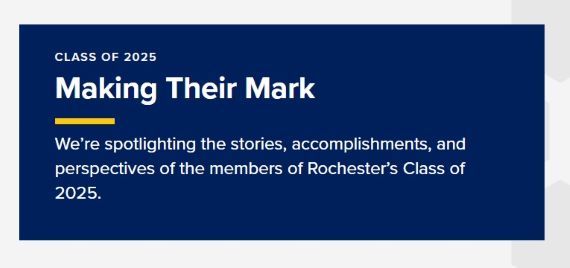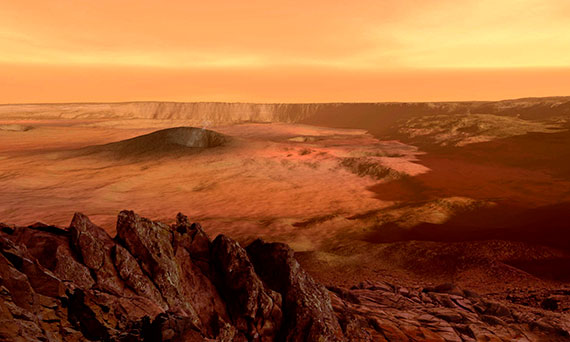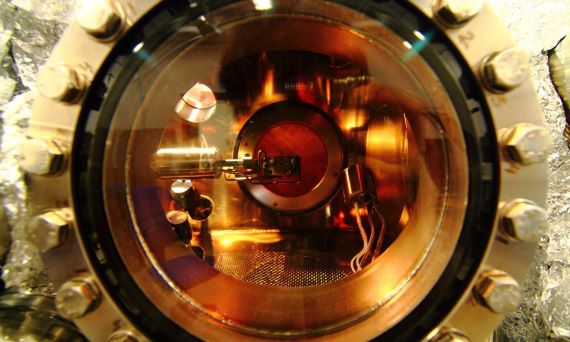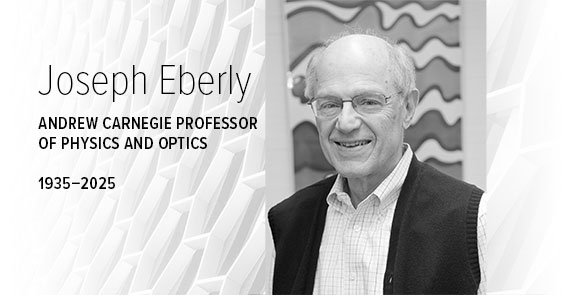|
|
A look back at student accomplishments
The Class of 2025 is filled with talented students with powerful stories. “Making Their Mark” spotlights the accomplishments, perspectives, and stories of serval members of the graduating Class of 2025, including these School of Arts and Sciences grads:
Read more about Rochester graduates who are making their mark.
Mars and Earth may have something in common
Mars may have more in common with Earth than scientists previously thought.
In a new study, Rochester researchers including PhD student JohnPaul Sleiman and Rachel Glade, an assistant professor in the Department of Earth and Environmental Sciences— and their colleagues found that soil features on Mars look similar to wave-shaped soil patterns found in Earth’s coldest climates.
This means that Earth and Mars may be shaped by some of the same basic forces and icy processes. The paper, published in the journal Icarus, offers new clues about Mars’ past climate and the kinds of environments that might have supported life in the past, as well as new insights into the fundamental physics of granular materials.
Read more about the surface patterns on Mars.
Researchers uncover new molecule with big possibilities 
A research team that includes Ignacio Franco, a professor of chemistry and of physics at Rochester, says it has uncovered “the world’s most electrically conductive organic molecule.” The discovery opens new possibilities for building smaller and more powerful and energy efficient computing devices.
In a paper published in the Journal of the American Chemical Society, the researchers unveiled a new type of molecule that can carry electrical current over record-breaking distances without losing efficiency. The molecule, which is composed of chemical elements found in nature, including carbon, sulfur, and nitrogen, could allow computer chip manufacturers to eliminate their reliance on silicon and metal as conductors.
“Molecules are nature’s tiniest, mightiest, and most configurable building blocks and can be engineered to build ultra-compact, ultra-efficient technology for everything from computers to quantum devices,” Franco says.
Read more about this research on a new type of molecule.
Pioneering physicist, optical scientist remembered
Physicist Joseph Eberly was a “giant in the optics community” according to Thomas Brown, the director of the University’s Institute of Optics. Eberly, the Andrew Carnegie Professor of Physics and a professor of optics at Rochester, died recently at the age of 89.
During his career, Eberly published more than 400 scientific journal articles. He also coauthored three monographs and textbooks on lasers and quantum optics and cofounded three international conferences for quantum optical physics.
Eberly’s most notable contributions to his field include the initial description of the spontaneous collapse and revival effect of coherence in the dynamics of a simple quantum model, the first description of Bessel beams, predictions of the recently observed non-spreading localized states of electrons in atoms, and the sudden death effect in quantum entanglement.
Read the full remembrance of Joseph Eberly.
Another Day of Giving in the books
The results are in for the Day of Giving held on May 1: All goals for the School of Arts and Sciences challenges were met. Thank you for your generosity.
The School of Arts and Sciences Fund attracted the top amount of donors at 173, followed by the Middle English Texts Series at 107 donors. Here’s a look at donation totals for SAS departments, programs, and affiliated activities as of May 15:
- Biology Department Gift Fund: $705
- Department of Music General Gift Fund: $8,450
- Department of Physics and Astronomy: $5,000
- Department of Political Science: $2,343
- Earth and Environmental Sciences Fund: $280
- History Department General Gift Fund: $1,393
- Middle English Texts Series (METS): $14,211
- Hope Family Center Annual Fund: $5,379
- Nancy Perini Chin Community Impact Internship Fund: $37,057
- Program of Dance and Movement: $250
- School of Arts and Sciences Annual Fund: $39,606
- Program of Dance and Movement: $250
- Rochester Education Justice Initiative $1,432
Have news to share? Send it our way
Send your SAS in Focus news tips to Sheila Rayam, director of SAS marketing and communications, at sheila.rayam@rochester.edu. Let her know about unique research, awards, publications, community collaborations, and other interesting news. Please put “SAS in Focus” in the subject heading.
|
|
|
|
|